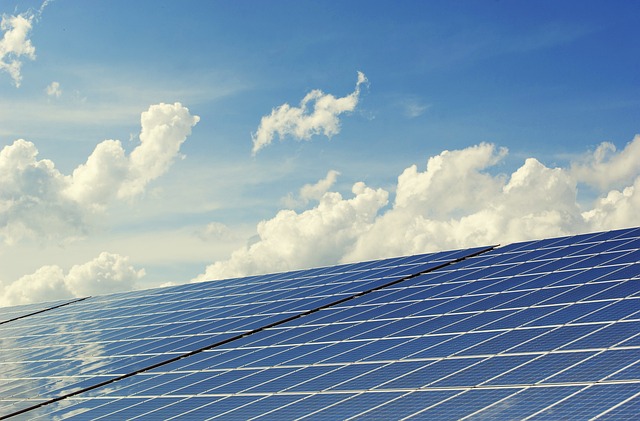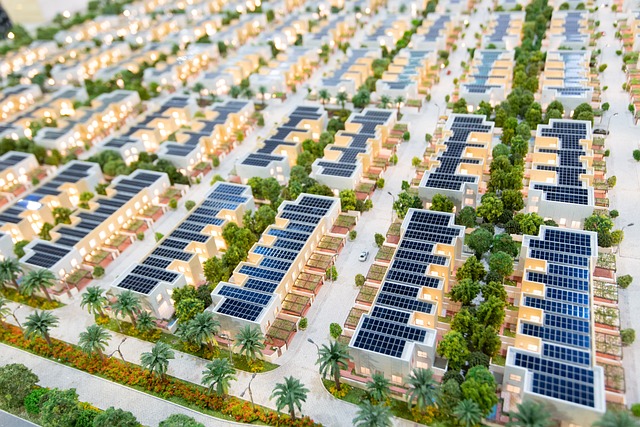2023 marked significant advancements in solar energy's photovoltaic (PV) technology, with multi-junction and perovskite cells leading the charge for higher efficiency and broader spectrum absorption. These innovations complement silicon-based PV systems by offering enhanced light absorption and material flexibility, potentially reducing production costs while maintaining or improving performance. Artificial intelligence has been integrated into PV systems to optimize performance, predict maintenance needs, and adapt to environmental changes, ensuring long-term efficiency. The evolution of solar PV technology not only underscores its growing importance in sustainable energy solutions but also positions it as a key player in reducing carbon emissions, cutting fossil fuel dependence, and promoting energy independence on a global scale. As nations strive to meet climate commitments and sustainable development goals, solar PV is set to become an integral part of the energy infrastructure, providing a clean, scalable, and adaptable power source for various sectors, from residential to industrial applications. Solar Energy's role in renewable energy is pivotal, offering a resilient and sustainable path towards a future with less reliance on non-renewable resources.
Solar Energy harnesses the power of the sun, a clean and abundant resource, to generate electricity through a technology known as Photovoltaic (PV). This article delves into the intricacies of PV technology, exploring its scientific foundations, advancements in efficiency, and its pivotal role in shaping a sustainable energy landscape. From the basics of photovoltaic cells to cutting-edge innovations, we will traverse the spectrum of this transformative technology’s applications, underscoring its potential to significantly impact global energy consumption patterns.
- Understanding Solar Energy and Photovoltaic (PV) Technology
- The Science Behind Photovoltaic Cells and Their Composition
- Advancements in PV Efficiency and Technological Innovations
- The Role of Photovoltaics in Sustainable Energy Future and Global Applications
Understanding Solar Energy and Photovoltaic (PV) Technology

Solar energy harnesses the power of the sun’s rays, a clean and renewable resource that has gained significant attention in the global quest for sustainable energy solutions. Photovoltaic (PV) technology is at the heart of solar energy utilization, serving as the conduit through which sunlight is converted directly into electricity. PV cells, often composed of semiconductor materials like silicon, are responsible for this process, with each cell containing a p-n junction that allows electrons to flow when irradiated by sunlight. This phenomenon is known as the photovoltaic effect and generates an electric current that can power homes, businesses, and various applications. The efficiency of these cells varies depending on their design, materials, and environmental conditions, but advancements in PV technology continue to enhance their performance. By understanding the fundamentals of solar energy and the technical intricacies of PV systems, we can appreciate their potential to mitigate greenhouse gas emissions, reduce reliance on fossil fuels, and contribute to a more sustainable future for our planet. The integration of solar PV technology into the energy mix is a critical component in combating climate change and promoting energy independence. With ongoing research and development, the efficiency and cost-effectiveness of PV systems are expected to improve, further solidifying their role in the transition towards renewable energy sources.
The Science Behind Photovoltaic Cells and Their Composition

Photovoltaic (PV) cells, the cornerstone of solar energy technology, harness the power of the sun to generate electricity. These cells are composed of semiconductor materials, typically silicon, which absorb sunlight and convert it into electrical energy through a process known as the photovoltaic effect. When photons from sunlight strike a PV cell, they impart their energy to electrons in the semiconductor material, elevating their energy state. This creates electron-hole pairs; the electrons flow through the material to produce electricity, which can be harnessed as direct current (DC). The cell’s structure is designed to allow this flow of charge carriers while blocking the neutral bulk regions from recombining with them.
The composition of a typical PV cell includes multiple layers: a top transparent conductive oxide (TCO) layer, a semiconductor base (often p-type silicon), and a bottom metallic contact. Between the TCO and the semiconductor base is the photoactive layer, where most of the sunlight is absorbed. The TCO allows sunlight to enter while collecting electrons generated in the absorption process. The metallic contact collects these electrons from the front side and drives them to an external circuit. This setup not only maximizes the absorption of sunlight but also optimizes the collection of charges, ensuring high efficiency in converting solar energy to electrical power. Advanced PV cells, such as multi-junction cells and perovskite cells, utilize innovative materials and designs to enhance performance under various environmental conditions, making them increasingly efficient and versatile across different applications.
Advancements in PV Efficiency and Technological Innovations

The field of photovoltaic (PV) technology has seen significant advancements in recent years, particularly in enhancing solar energy efficiency and developing innovative solutions that harness the power of the sun more effectively. One of the key trends in PV efficiency involves the use of multi-junction solar cells, which can capture a broader spectrum of sunlight, thereby increasing energy conversion rates. These advanced cells are composed of multiple layers, each tuned to absorb different wavelengths of light, and when combined, they can significantly boost overall power output compared to traditional single-junction cells.
Furthermore, technological innovations such as perovskite solar cells have emerged as a promising alternative to conventional silicon-based PV systems. Perovskites offer higher absorption coefficients, greater flexibility, and potentially lower production costs due to their solution-processable nature. Researchers are also exploring ways to integrate these cells with other materials, like organic photovoltaics, to create hybrid systems that combine the strengths of both technologies. Additionally, the integration of artificial intelligence (AI) in PV systems is revolutionizing how they operate and maintain peak performance. AI algorithms can predict maintenance needs, optimize system layouts for maximum sunlight exposure, and even adjust to environmental changes in real-time, thereby ensuring that solar energy installations are as efficient as possible. These advancements underscore the dynamic nature of solar technology and its potential to become an increasingly significant component of the global energy mix.
The Role of Photovoltaics in Sustainable Energy Future and Global Applications

Solar energy, harnessed through photovoltaic (PV) technology, stands as a pivotal component in the transition to a sustainable energy future. PV systems effectively convert sunlight directly into electricity, offering a clean, renewable source of power that significantly reduces our reliance on fossil fuels. As global awareness of climate change intensifies, the role of solar PV has become increasingly critical. It not only mitigates greenhouse gas emissions but also empowers energy independence at both local and national scales. The scalability of PV installations—from small-scale residential setups to vast utility-scale solar farms—makes it an adaptable solution for diverse energy needs across the globe.
The integration of photovoltaic technology is expanding rapidly, with innovative applications spanning from traditional electricity generation to the powering of remote sensors and off-grid telecommunications systems. The predictability of solar energy, coupled with its decreasing cost due to technological advancements and economies of scale, further solidifies its position as a mainstay in the global energy mix. As countries strive to meet international climate commitments and pursue sustainable development goals, PV technology is poised to play an integral role, offering a resilient and versatile source of clean electricity that can be leveraged for a wide array of applications, from residential power to large-scale industrial use, thus driving the world towards a greener, more sustainable energy future.
Photovoltaic technology stands as a cornerstone in harnessing solar energy’s potential, a clean and renewable resource that is increasingly integral to our global energy mix. The advancements in PV efficiency and technological innovations have not only improved the conversion rates but also expanded their applications across various sectors. As we continue to refine and diversify our approach to solar energy, it becomes clear that PV technology will play a pivotal role in shaping a sustainable energy future for generations to come. The exploration of this technology’s capabilities highlights its significant contribution to reducing carbon emissions and promoting energy independence worldwide. Embracing the progress made in photovoltaic science will undoubtedly propel us towards a more resilient and sustainable world powered by the vast, abundant energy of the sun.
